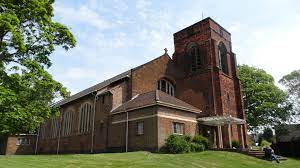So what is Easter all about?



Well first of all, let’s look at a couple of often asked questions
Question: Why does the date of Easter move about?
Answer: Easter Sunday commemorates the day when Jesus rose from the dead after his crucifixion. We know when this was because he was crucified the day before the Jewish celebration of Passover and he rose on the 3rd day (Sunday). Now the Jews used a lunar calendar (i.e. based on the cycles of the moon) to calculate Passover and the Christian Church followed suit in calculating on which day to celebrate Easter. However, that wasn’t as easy as it sounds since at the time there were different ways of calculating Lunar cycles. In 325 AD the Roman emperor Constantine called a council of Church leaders to sort out a load of issues including ‘when is Easter?’ It was decided that all Christians should celebrate Easter on the first Sunday after the first full moon on or after the spring equinox. You’d have thought that would have settled it wouldn’t you? But not so! Different traditions still chose different calculations to determine when Easter fell and this wasn’t helped by a change in calendar from the Julian to the Gregorian (the one we use today). Even today, although the Gregorian calendar is used universally, the Orthodox Christian church still uses the Julian calendar to calculate Easter so they celebrate at a slightly different time to the Western Churches.
So for us, Easter is always on the first Sunday after the first full moon that follows the spring equinox. However, this full moon is an ecclesiastical full moon (ecclesiastical means ‘of the Church’), and isn’t calculated in quite the same way modern astronomers would. Simply eh?
Question: Where does the name ‘Easter’ come from?
Answer: It’s not absolutely certain, but it is thought that name ‘Easter’ is taken from Eostre, the name of a pre-Christian goddess in England, who was celebrated at the beginning of spring. The only reliable reference to this is comes from the writings of the Venerable Bede from the late 7th early 8th centuries. Bede wrote: “the month in which English Christians were celebrating the resurrection of Jesus had been called Eosturmonath in Old English, referring to a goddess named Eostre. And even though Christians had begun affirming the Christian meaning of the celebration, they continued to use the name of the goddess to designate the season.” This seems to have stuck
Question: So where do rabbits and eggs come in?
Answer: A tradition of decorating eggs seems to have been around since the Middle Ages (eggs denoting new life) but it wasn’t until the 17th Century when childhood began to be recognised as being more than just preparation for adulthood that times like Christmas and Easter became times of family celebration. Decorating eggs was still common up to the middle of the 20th century but thereafter they were almost entirely replaced by chocolate eggs.
The Easter Bunny seems to have started life in Germany as the ‘Easter Hare’ and taken to the USA by German immigrants where it was supplanted by the more ’cuddly’ rabbit.
But all of this is of little importance except perhaps as quiz questions. What is infinitely more important and indeed more amazing is that almost 2,000 years ago Jesus was tortured and crucified and was buried in a tomb. Now crucifixion was a common means of execution – hundreds of thousands, some historians think more than a million – people were crucified by the Romans. There is not a single record of anyone surviving! There can be no doubt that Jesus died on the cross. And yet three days later the tomb that had been sealed and guarded was empty. A few weeks later, the same people who had deserted Jesus at the first hint of trouble and hidden themselves in locked rooms terrified that the same people who had killed Jesus would come for them, were out in the streets proclaiming that he had risen from the dead, that he was indeed the Son of God. They were so persuasive that thousands of people joined then in just one day, despite strong political and religious resistance. Within 30 years or so, belief in Jesus the risen Christ had spread throughout most of the known world. Could this really have happened if it was all based on a con trick? Seriously? The evidence is overwhelming – Jesus was undoubtedly crucified (there’s plenty of independent evidence of this). He rose from the dead three days later and commissioned and empowered his followers to take the ‘Good News’ (Gospel) throughout the world. And that is exactly what they did. And what is that Good News? It is encapsulated in one of the most famous verses in the whole Bible.
For God so loved the world that he gave his one and only Son, that whoever believes in him shall not perish but have eternal life. (John 3:16)




